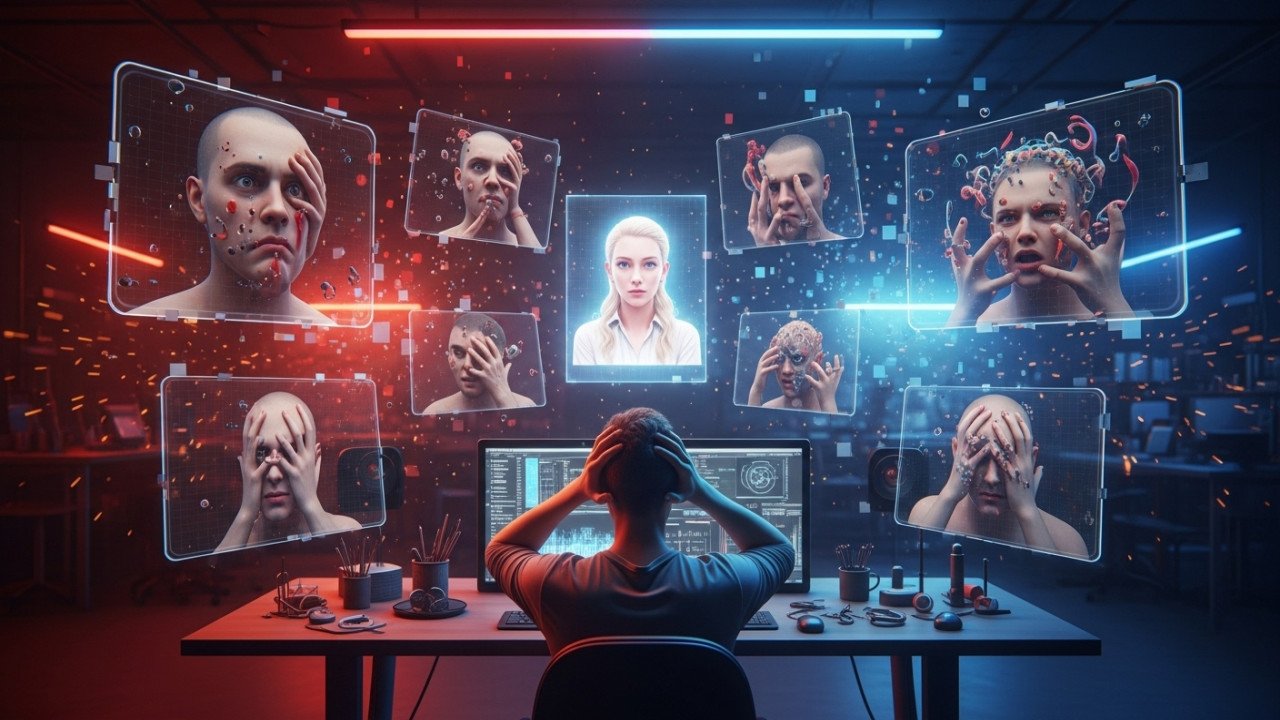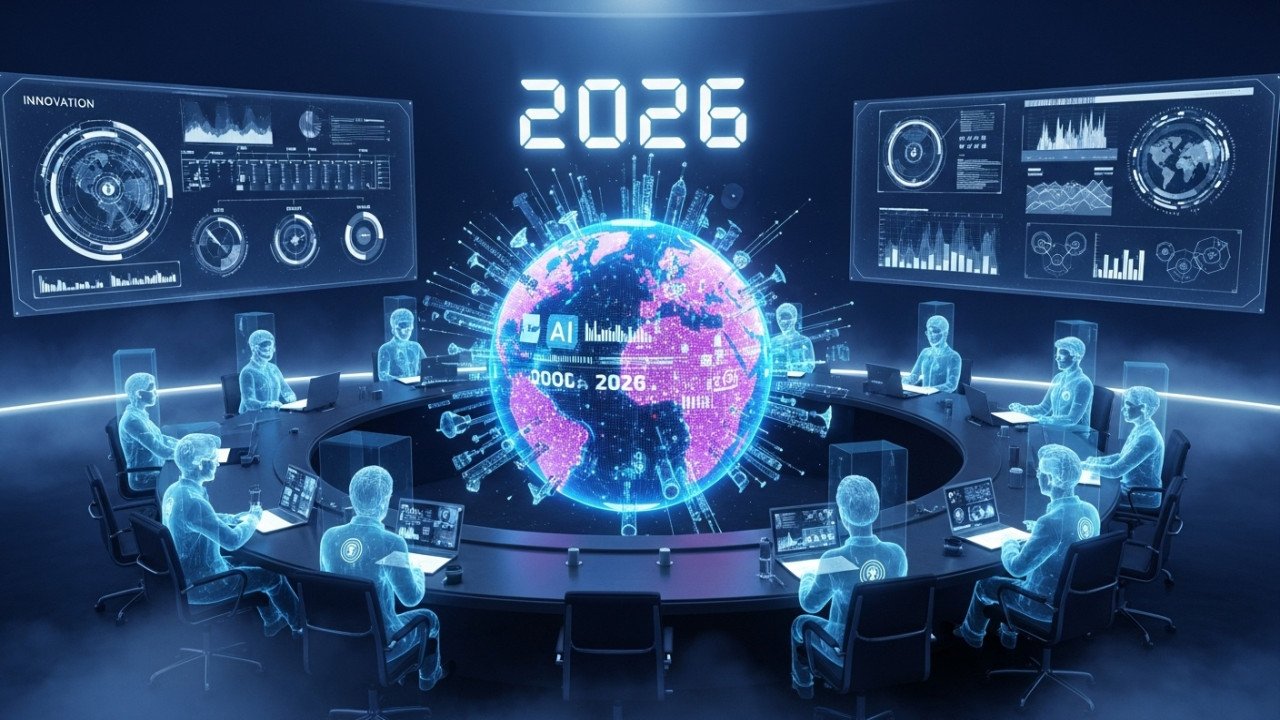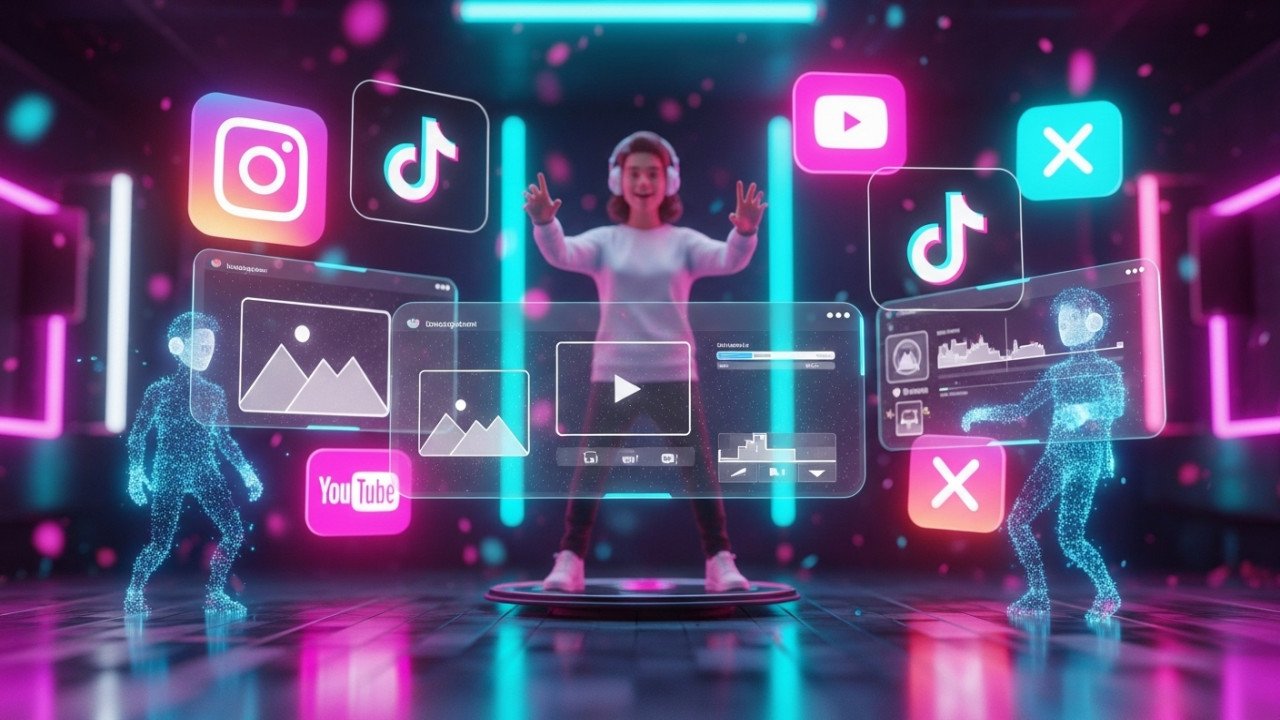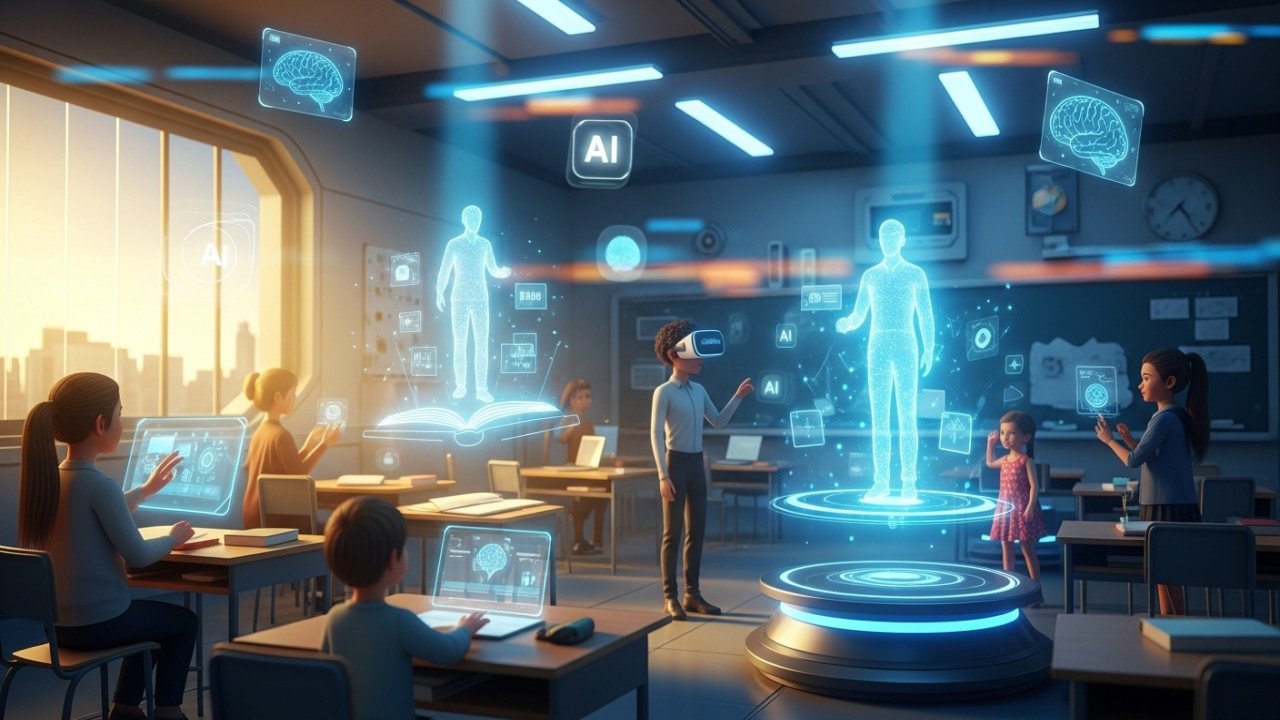AI Image Generator Mistakes: Top Errors to Avoid in 2025
Common Mistakes to Avoid When Using AI Image Generators
Creating stunning images with artificial intelligence seems deceptively simple—just type what you want and watch the magic happen. However, the reality of AI image generation involves nuanced techniques, strategic thinking, and avoiding common pitfalls that can derail your creative projects and waste valuable time and resources.
Even experienced users frequently make preventable mistakes that limit their results, increase costs, and create frustration during what should be an exciting, creative process. Understanding these common errors and learning to avoid them can dramatically improve your AI image generation success rate and overall satisfaction with the technology.
This comprehensive guide identifies the most frequent mistakes users make across all major AI platforms, providing practical solutions and prevention strategies that will elevate your AI image generation skills and help you achieve consistently better results from every creative session.
Prompt-Related Mistakes
Overly Vague Descriptions
One of the most common mistakes beginners make is using vague, generic prompts that provide insufficient guidance for AI systems to create compelling, specific images. Prompts like "nice landscape" or "beautiful woman" lack the detail necessary for distinctive results.
Vague prompts typically produce generic, stock-photo-like images that lack personality, uniqueness, or connection to your specific vision. These results often feel hollow and fail to serve your creative or professional needs effectively.
The solution involves adding specific details about colors, lighting, composition, style, and context that help AI systems understand your exact vision. Transform "nice landscape" into "rolling green hills under dramatic storm clouds with golden sunlight breaking through."
Contradictory Instructions
Many users inadvertently include contradictory elements in their prompts, confusing AI systems and resulting in incoherent or impossible images that satisfy none of the requested elements adequately.
Common contradictions include combining incompatible lighting conditions like "bright daylight" with "moonlit night," or requesting both "minimalist design" and "highly detailed ornate patterns" in the same image.
Avoid contradictions by carefully reviewing your prompts before submission, ensuring all elements work together logically to create a coherent, achievable vision that AI systems can interpret consistently.
Prompt Overcomplication
While specificity helps, many users overcomplicate prompts with excessive details that overwhelm AI systems and lead to confused, cluttered results that fail to emphasize important elements effectively.
Extremely long prompts with dozens of descriptors often produce images where no single element receives proper attention, resulting in visually chaotic outputs that lack clear focus or compositional hierarchy.
Balance specificity with clarity by focusing on the most important elements first, then adding supporting details that enhance rather than compete with your primary vision.
Ignoring Platform-Specific Syntax
Different AI platforms respond better to specific prompt structures and keywords, but many users apply identical approaches across all platforms without considering these important differences.
Midjourney responds well to artistic and aesthetic keywords, while DALL-E excels with detailed, conversational descriptions. Stable Diffusion offers flexibility but benefits from understanding specific model strengths and limitations.
Research platform-specific best practices and adjust your prompt style accordingly, optimizing your approach for each tool's unique capabilities and preferred prompt structures.
Technical Configuration Errors
Wrong Aspect Ratio Choices
Many users select inappropriate aspect ratios for their intended use cases, creating composition problems and forcing unnecessary cropping or distortion when adapting images for specific applications.
Portrait-oriented images don't work well for website headers, while landscape images fail as social media profile pictures. Understanding aspect ratio requirements before generation saves time and improves composition quality.
Plan your aspect ratio selection based on intended usage, considering where and how your images will be displayed to ensure optimal composition and visual impact.
Inappropriate Resolution Settings
Selecting wrong resolution settings wastes generation credits on unnecessarily high-resolution images for web use, or produces low-resolution outputs inadequate for print applications or professional use.
High-resolution generation typically costs more credits or time, making it inefficient for initial concept exploration or images intended only for digital display at smaller sizes.
Match resolution settings to your intended use case, using lower resolutions for web content and concept development, reserving high-resolution generation for final outputs requiring print quality.
Neglecting Style Parameters
Many platforms offer style parameters, negative prompts, and advanced settings that significantly improve output quality, but inexperienced users often ignore these powerful customization options.
Default settings rarely optimize for specific use cases or aesthetic preferences, meaning users miss opportunities to fine-tune results and achieve better quality through available platform features.
Explore advanced settings and style parameters systematically, experimenting with different combinations to understand how they affect your specific types of projects and creative goals.
Misunderstanding Model Differences
Various AI models excel at different types of content, but users often select inappropriate models for their specific needs, limiting quality and wasting resources on suboptimal generation approaches.
Photorealistic models work poorly for cartoon styles, while artistic models may not achieve the precision needed for technical illustrations or business applications requiring accuracy.
Research available models and their strengths, selecting appropriate options based on your specific content requirements and desired aesthetic outcomes rather than using default selections blindly.
Content and Creative Mistakes
Insufficient Reference Research
Many users attempt to generate images of subjects, styles, or concepts they don't fully understand, resulting in inaccurate or inappropriate outputs that fail to meet professional or educational standards.
Without proper reference research, prompts often include incorrect details, cultural inaccuracies, or impossible combinations that produce unrealistic or offensive results unsuitable for their intended purposes.
Conduct thorough research before generating images of specific subjects, ensuring your prompts include accurate details and culturally appropriate representations that respect the subjects you're depicting.
Ignoring Copyright Considerations
Users frequently attempt to generate images closely resembling copyrighted characters, artworks, or branded content without considering legal implications or platform policies that prohibit such usage.
Copyright violations can result in account suspensions, legal issues, and unusable content that cannot be used for intended commercial or professional applications without significant risk.
Focus on original concepts and generic subjects rather than attempting to reproduce copyrighted material, ensuring your generated content can be used safely for your intended purposes.
Poor Quality Control Standards
Many users accept mediocre results without iterating or refining their approach, missing opportunities to achieve significantly better outcomes through systematic improvement and quality assessment.
Settling for poor-quality outputs wastes the potential of AI tools and often results in content that fails to meet professional standards or effectively communicate intended messages.
Develop quality standards for your projects and iterate systematically until achieving results that meet your specific requirements and professional expectations consistently.
Inappropriate Style Choices
Users often select artistic styles that don't match their content's purpose or target audience, creating a disconnect between visual presentation and intended message or application context.
Corporate presentations shouldn't feature cartoon styles, while children's content may not benefit from photorealistic approaches. Style choices should support rather than undermine content goals.
Consider your audience, purpose, and context when selecting artistic approaches, ensuring visual style enhances rather than conflicts with your content's intended impact and reception.
Workflow and Process Errors
Lack of Systematic Approach
Many users approach AI image generation randomly without systematic methods for tracking what works, learning from failures, or building upon successful approaches for future projects.
Random experimentation without documentation makes it difficult to replicate successes or understand why certain approaches produce better results than others, limiting skill development.
Develop systematic approaches to prompt development, maintain records of successful techniques, and analyze results methodically to build expertise and improve consistency over time.
Insufficient Iteration and Testing
Users often expect perfect results from initial attempts, failing to iterate and refine their approach through multiple generations, which could lead to significantly improved outcomes.
Single-attempt generation rarely produces optimal results, especially for complex concepts or specific requirements that benefit from iterative refinement and systematic improvement approaches.
Plan for multiple iterations when working on important projects, treating initial generations as starting points rather than final outputs, and refining systematically toward desired outcomes.
Poor Project Planning
Many users begin generating images without clear goals, specifications, or understanding of how generated content will be used, leading to wasted effort and unsuitable results.
Without proper planning, users often generate inappropriate formats, styles, or content that don't serve their actual needs, requiring extensive revision or complete regeneration later.
Define project requirements clearly before beginning generation, including intended use cases, technical specifications, style preferences, and quality standards that will guide your creative process.
Inadequate Backup and Organization
Users frequently fail to save promising intermediate results or organize their generated content effectively, losing valuable work and making it difficult to build upon previous successes.
Poor organization makes it challenging to find previous work, compare different approaches, or maintain consistency across multiple images within larger projects requiring cohesive visual styles.
Develop systematic organization methods for saving and categorizing generated images, maintaining libraries of successful prompts and approaches for future reference and project development.
Platform-Specific Common Errors
DALL-E Usage Mistakes
Many DALL-E users waste credits on experimental generations without understanding the platform's strengths in detailed scene description and photorealistic rendering capabilities.
Users often underutilize DALL-E's editing features, missing opportunities to refine images through inpainting, outpainting, and variation generation that could improve results significantly.
Maximize DALL-E effectiveness by crafting detailed, conversational prompts and utilizing editing features for iterative improvement rather than generating completely new images for minor adjustments.
Midjourney Discord Navigation Issues
New Midjourney users often struggle with Discord interface navigation, missing generated images in busy channels, or failing to understand command syntax and parameter usage.
The social nature of Midjourney's Discord environment can be overwhelming for users seeking focused creative work without community interaction or public sharing of experimental content.
Learn Discord navigation thoroughly and consider subscribing to private generation modes if community interaction interferes with your creative process or project confidentiality requirements.
Stable Diffusion Configuration Problems
Stable Diffusion users frequently select inappropriate models, settings, or parameters without understanding their effects on generation quality and style consistency.
The platform's flexibility can overwhelm beginners who attempt advanced configurations without understanding fundamental concepts, leading to frustration and poor results despite the platform's capabilities.
Start with proven configurations and gradually experiment with advanced settings as you build an understanding of how different parameters affect your specific types of creative projects.
Web Interface Limitations
Many users don't realize that web-based AI generators often have different capabilities and limitations compared to native applications or API access, affecting result quality and available features.
Free web interfaces may have reduced functionality, lower quality outputs, or usage restrictions that limit their suitability for professional applications requiring consistent, high-quality results.
Understand the capabilities and limitations of your chosen access method, upgrading to more capable interfaces when your projects require features or quality levels beyond basic web-based tools.
Budget and Resource Management Mistakes
Inefficient Credit Usage
Users often waste paid credits on low-quality experimental generations rather than using free or lower-cost options for initial concept development and reserving premium credits for final outputs.
Generating high-resolution images for concept testing wastes resources that could be better allocated to final production work, where quality and resolution matter most.
Optimize credit usage by using free tools or lower-cost options for experimentation, saving premium credits for final generations where quality and specific features justify the expense.
Subscription Plan Mismatches
Many users select inappropriate subscription plans that don't match their actual usage patterns, either paying for unused capacity or facing restrictions that limit their creative productivity.
Business users may underestimate their generation needs, while casual users might over-subscribe to plans offering features they don't actually require for their projects.
Analyze your actual usage patterns and requirements carefully before committing to subscription plans, considering both current needs and anticipated growth in your AI image generation activities.
Ignoring Free Alternatives
Users sometimes overlook capable free alternatives that could meet their needs adequately, unnecessarily spending money on premium services for applications where free tools would suffice.
Multiple free platforms offer excellent capabilities for many use cases, making paid subscriptions unnecessary for users with basic requirements or limited budgets.
Explore free alternatives thoroughly before investing in premium services, ensuring that paid features actually provide value for your specific creative needs and professional requirements.
Poor Time Management
Many users spend excessive time on unimportant experimental generations while neglecting systematic skill development that would improve their overall effectiveness and result quality.
Without time management strategies, users can lose hours experimenting randomly rather than focusing on productive learning and specific project completion goals.
Allocate time systematically between experimentation, skill development, and project completion, ensuring productive use of creative time and steady progress toward improved capabilities.
Quality Assessment and Improvement Errors
Accepting Mediocre Results
Users frequently accept lower-quality outputs rather than investing additional effort in improvement, missing opportunities to achieve significantly better results through systematic refinement.
This acceptance of mediocrity limits skill development and professional growth while producing content that may not effectively serve intended purposes or meet audience expectations.
Develop quality standards appropriate for your projects and invest necessary effort in achieving results that meet these standards consistently,y rather than settling for convenient but inadequate outputs.
Failing to Learn from Mistakes
Many users repeat the same errors without analyzing what went wrong or developing strategies for improvement, limiting their growth and perpetuating frustrating patterns.
Without systematic analysis of failures and successes, users miss valuable learning opportunities that could accelerate skill development and improve future project outcomes significantly.
Maintain records of both successful and unsuccessful attempts, analyzing patterns to understand what works best for your specific types of projects and creative goals.
Inconsistent Evaluation Criteria
Users often evaluate results inconsistently, making it difficult to identify improvement strategies or understand which approaches produce better outcomes for their specific needs.
Without consistent evaluation criteria, it becomes challenging to build systematic knowledge about effective techniques or make informed decisions about tool selection and approach optimization.
Develop clear, consistent criteria for evaluating generated images based on your specific needs, maintaining objective standards that guide improvement efforts and tool selection decisions.
Neglecting Feedback Integration
Many users work in isolation without seeking feedback from others or considering how their target audience might perceive generated content, limiting perspective and improvement opportunities.
Professional applications benefit significantly from external feedback that identifies issues or improvement opportunities that creators might miss due to familiarity with their own work.
Actively seek feedback from colleagues, target audience members, or online communities to gain broader perspectives on your work and identify areas for improvement or refinement.
Prevention Strategies and Best Practices
Developing Systematic Approaches
Create standardized workflows for different types of projects that incorporate lessons learned from previous work and establish consistent quality standards for various applications.
Systematic approaches reduce errors, improve efficiency, and ensure consistent quality across projects while providing frameworks for continuous improvement and skill development.
Document effective techniques and build template approaches for common project types, creating efficient starting points that can be customized for specific requirements.
Building Knowledge Libraries
Maintain organized collections of successful prompts, effective techniques, and platform-specific insights that can be referenced and adapted for future projects and learning opportunities.
Knowledge libraries accelerate project development and reduce the likelihood of repeating past mistakes while providing foundations for exploring new, creative directions confidently.
Include notes about what worked, what didn't, and why certain approaches were effective for specific types of content or creative goals.
Continuous Learning Commitment
Stay informed about platform updates, new techniques, and community insights that can improve your capabilities and help you avoid emerging pitfalls in rapidly evolving AI tools.
The AI image generation field evolves rapidly, making continuous learning essential for maintaining effectiveness and taking advantage of new capabilities and opportunities.
Participate in online communities, follow platform updates, and experiment regularly with new features and techniques to maintain cutting-edge skills and knowledge.
Quality Control Implementation
Establish clear quality standards and systematic review processes that ensure generated content meets your requirements before considering projects complete or ready for use.
Quality control processes prevent the release of substandard content while providing opportunities to refine and improve results before they reach intended audiences or applications.
Include technical checks, aesthetic evaluation, and appropriateness assessment in your quality control procedures to ensure a comprehensive evaluation of generated content.
Conclusion
Avoiding common mistakes in AI image generation requires understanding, planning, and systematic approach development that treats these powerful tools with the respect and attention they deserve for optimal results.
The most successful AI image generation users combine technical knowledge with creative vision, systematic approaches with experimental flexibility, and quality standards with efficient workflows that maximize their creative potential.
Learning from others' mistakes accelerates your own development while saving time, money, and frustration that can otherwise derail creative projects and limit your success with these revolutionary tools.
As AI image generation technology continues evolving rapidly, maintaining awareness of common pitfalls and best practices ensures you can adapt effectively while avoiding predictable problems that limit creative success and professional growth.
Remember that mastery comes through deliberate practice, systematic learning, and consistent application of proven techniques rather than hoping for miraculous results from minimal effort or random experimentation.
Read also: Text-to-Image Revolution: How AI is Transforming Digital Creativity












Comments (0)
No comments found